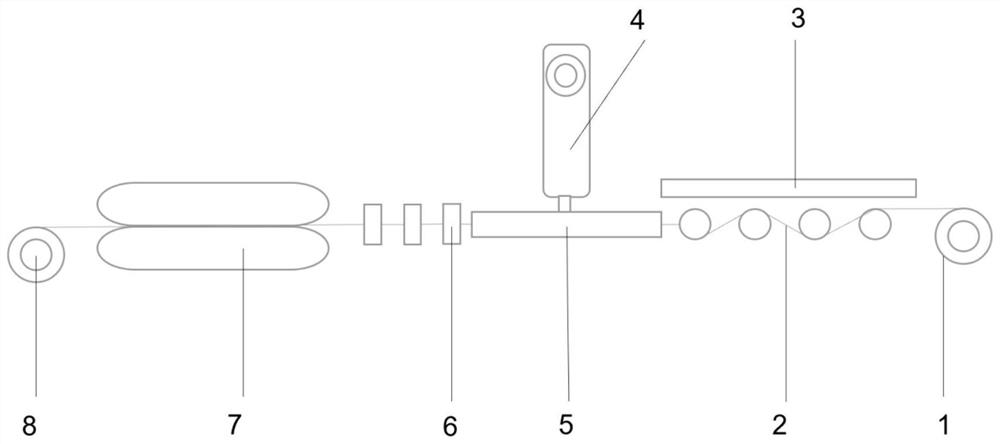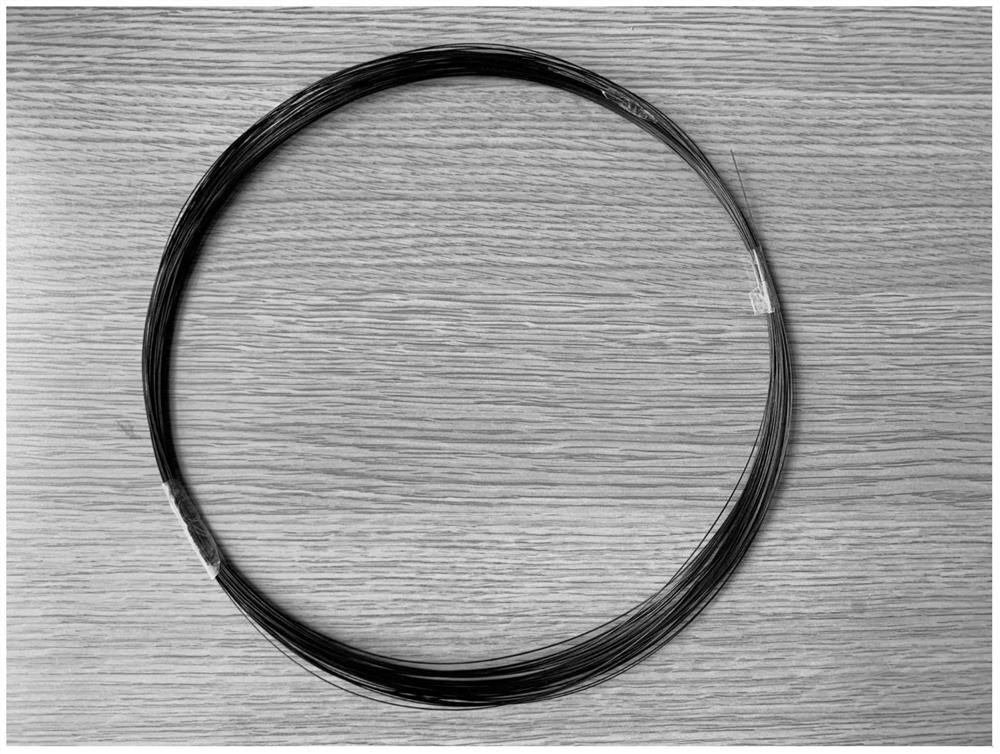Preparation method of fiber-reinforced thermoplastic composite filaments for 3D printing
A 3D printing and fiber reinforced technology, applied in the field of 3D printing, can solve the problems of low porosity and high production efficiency, and achieve the effect of meeting production needs, improving production efficiency and improving mechanical properties
- Summary
- Abstract
- Description
- Claims
- Application Information
AI Technical Summary
Problems solved by technology
Method used
Image
Examples
preparation example Construction
[0030] The invention provides a method for preparing filaments of fiber-reinforced thermoplastic composite materials for 3D printing.
[0031] The method includes steps as follows:
[0032] S1: Fiber tow spreading: After setting the temperature of the extruding device, impregnating device and sizing device, introduce the thermoplastic resin from the feeding port of the extruding device, and introduce the fiber from the spreading frame;
[0033] S2: Preheating the fiber tow;
[0034] S3: Fiber and thermoplastic resin impregnation: After the fiber tow reaches the set temperature, open the extrusion device, squeeze the thermoplastic resin into the impregnation device and impregnate the fiber;
[0035] S4: Sizing through the sizing mold: after passing 1-5 sizing molds, the 3D printing wire is obtained;
[0036] S5: Cooling and winding: the obtained 3D printing wire is cooled and then wound to obtain a fiber-reinforced thermoplastic composite filament for 3D printing.
[0037] A...
PUM
| Property | Measurement | Unit |
|---|---|---|
| diameter | aaaaa | aaaaa |
Abstract
Description
Claims
Application Information
 Login to View More
Login to View More - Generate Ideas
- Intellectual Property
- Life Sciences
- Materials
- Tech Scout
- Unparalleled Data Quality
- Higher Quality Content
- 60% Fewer Hallucinations
Browse by: Latest US Patents, China's latest patents, Technical Efficacy Thesaurus, Application Domain, Technology Topic, Popular Technical Reports.
© 2025 PatSnap. All rights reserved.Legal|Privacy policy|Modern Slavery Act Transparency Statement|Sitemap|About US| Contact US: help@patsnap.com



